Damascus has been feeding people for thousands of years, and it shows in every bite you take there. The city’s food scene isn’t just about sustenance — it’s about gathering around tables, sharing stories, and experiencing flavors that have been perfected over generations. Walking through the Old City’s narrow streets, you’ll catch whiffs of spices that have traveled ancient trade routes, and the sounds of families laughing over meals that bring everyone together.
Syrian cuisine thrives on communal dining, where dishes are meant to be passed around, mixed and matched, and enjoyed as part of a larger feast. Here is a list of 15 Syrian dishes that truly come alive when shared with others in Damascus.
Kibbeh
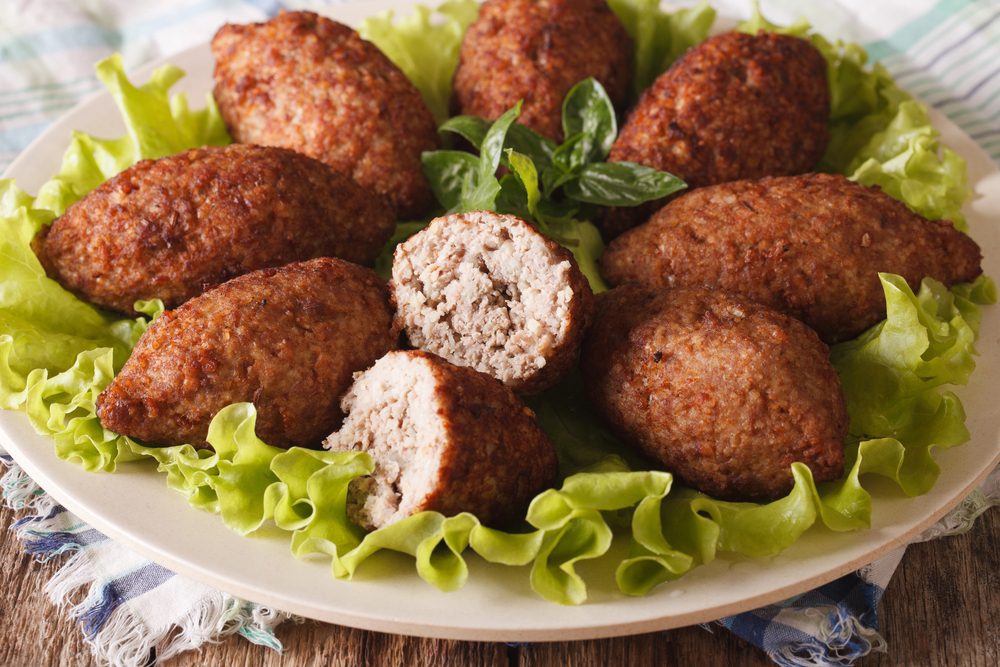
Kibbeh stands as Syria’s national dish — and for good reason. These football-shaped delights combine bulgur wheat with finely ground meat, typically lamb or beef, then get stuffed with a savory mixture of onions, pine nuts, and spices. The outer shell delivers a satisfying crunch that gives way to tender, flavorful filling. In Damascus, families often gather to make kibbeh together, turning the preparation into a social event where everyone has a role in shaping these little parcels of joy.
Fattoush
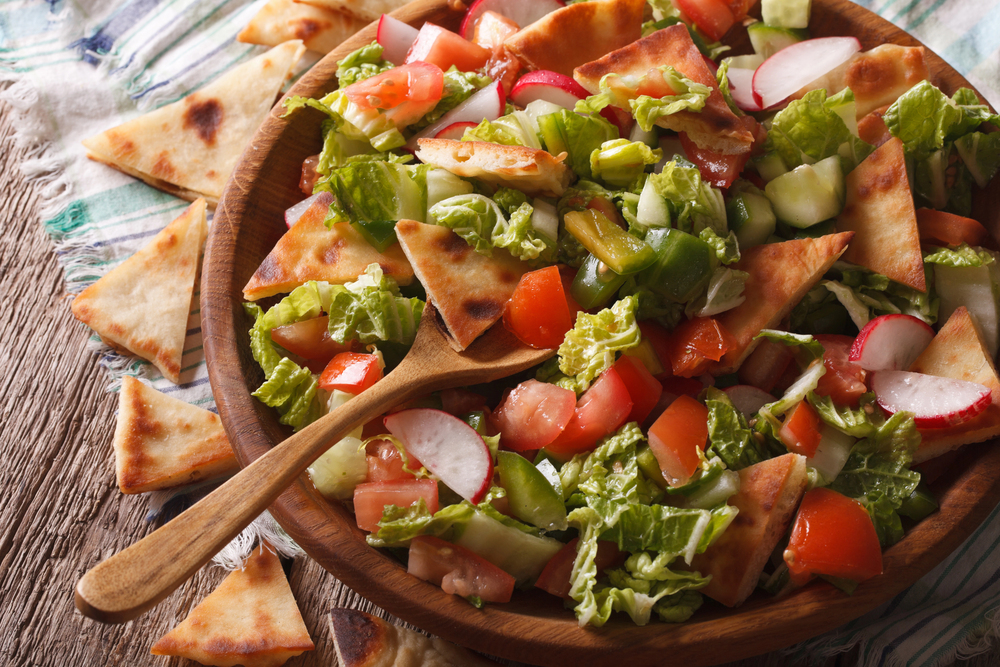
This vibrant salad transforms yesterday’s bread into today’s masterpiece. Fattoush takes toasted pita pieces and tosses them with fresh vegetables like tomatoes, cucumbers, radishes, and herbs. The magic happens with the sumac dressing — a tangy, lemony blend that makes every bite pop with flavor. Sharing fattoush feels like sharing sunshine, especially when everyone reaches for the same perfect bite with the crunchiest bread piece.
Muhammara
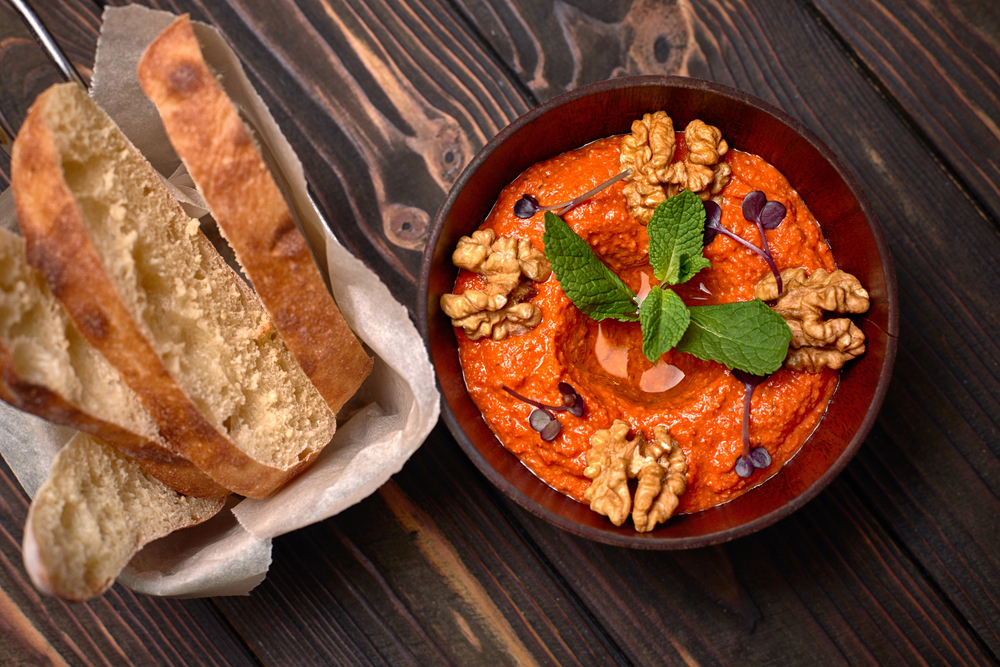
Think of muhammara as Syria’s answer to hummus, though with a spicy twist. This red pepper and walnut spread brings heat alongside richness to any table. Roasted red peppers get blended with walnuts, breadcrumbs, and a kick of Aleppo pepper to create something that’s both smooth and textured. Served with warm pita, it disappears quickly when shared — everyone coming back for ‘just one more scoop’ until the bowl’s empty.
Mansaf
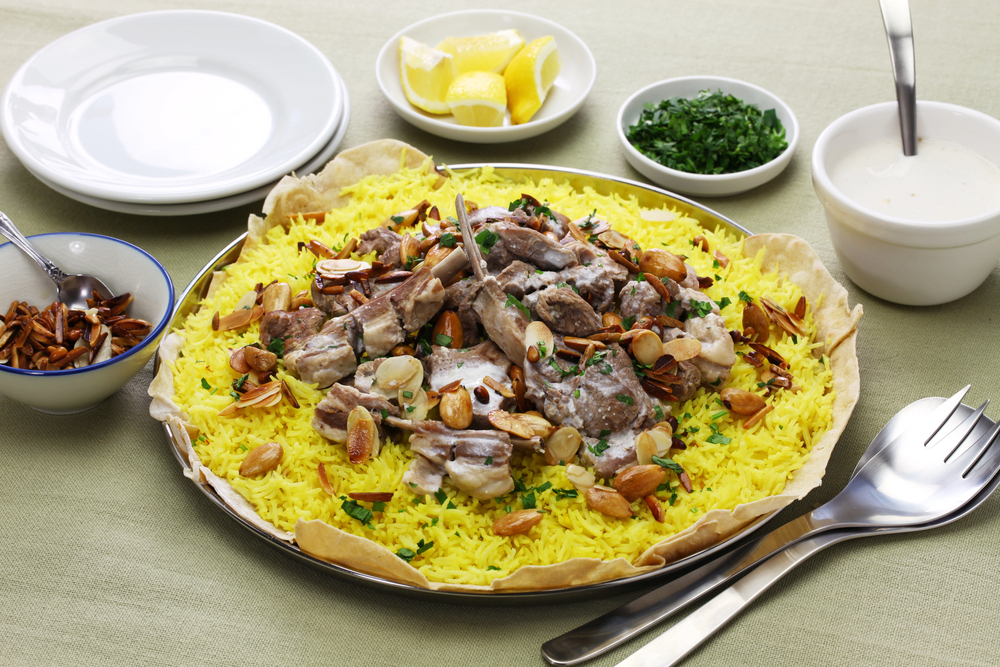
While often associated with Jordan, mansaf has deep roots in Damascus dining culture. This dish centers around tender lamb cooked in a tangy yogurt sauce called jameed, served over a bed of rice. The communal aspect is everything — traditionally eaten with the hands from a shared platter, bringing people together in the most literal sense. The rich, creamy sauce soaks into the rice, creating layers of flavor that seem to multiply when enjoyed with others.
Makloubeh
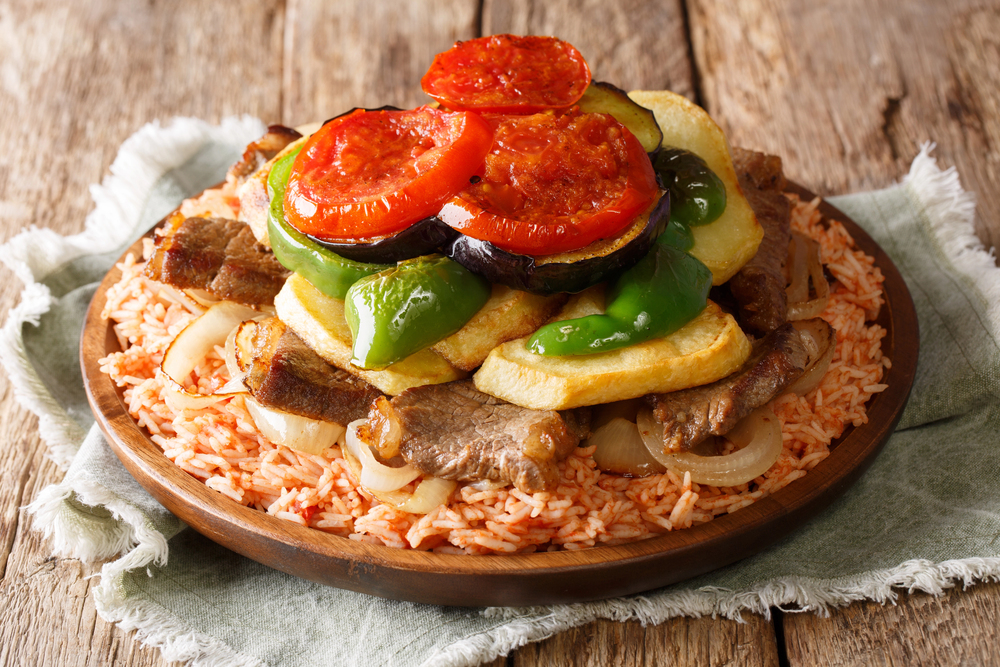
The name literally means ‘upside down,’ which perfectly describes both the cooking method and the dramatic presentation. Vegetables, meat, and rice get layered in a pot, then flipped onto a serving platter in one impressive move. The bottom layer becomes golden and crispy while the top stays fluffy and aromatic. When done right, makloubeh creates a beautiful dome of colors and textures that practically demands to be shared and admired before diving in.
Shawarma
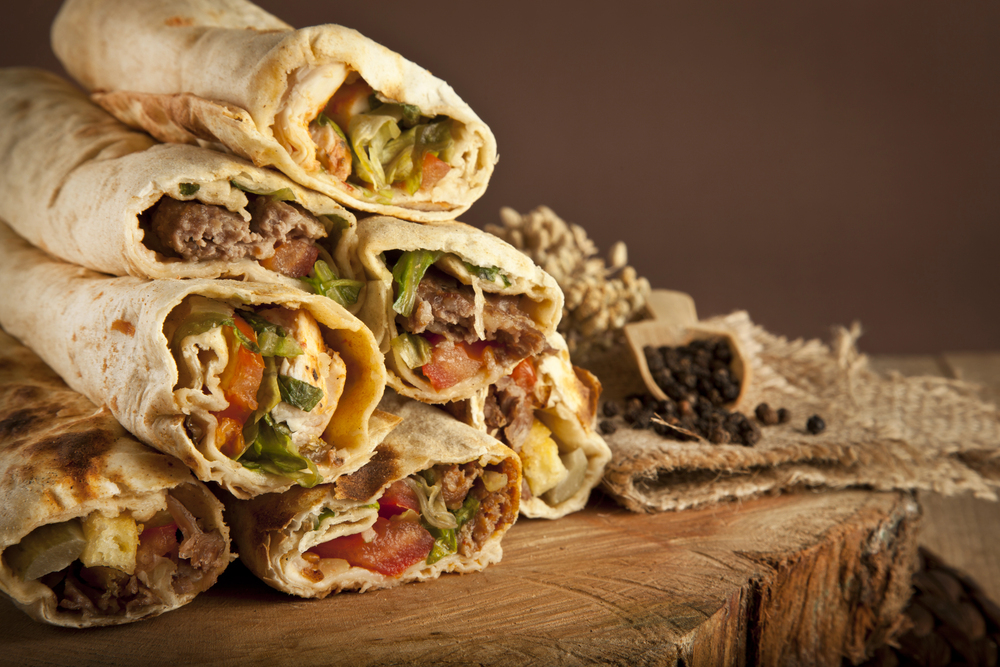
Damascus shawarma goes beyond the quick street food version you might know. Here, tender strips of marinated meat get carved from a slowly rotating spit, then wrapped in fresh bread with pickles, garlic sauce, and vegetables. The key is the 24-hour marination process that makes the meat incredibly flavorful. Sharing shawarma means everyone gets to customize their wrap — creating a personalized experience from the same delicious source.
Baklava
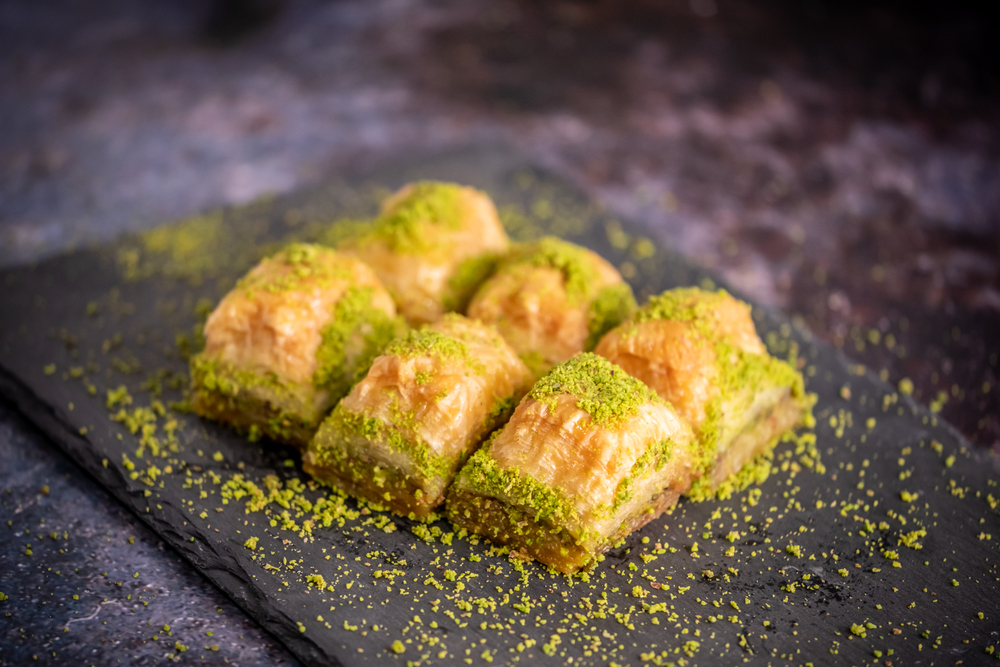
These honey-soaked pastry layers represent pure indulgence in every bite. Paper-thin phyllo dough gets layered with chopped nuts — usually pistachios or walnuts — then baked until golden and crispy. The final touch of rose or orange blossom-scented syrup transforms it into something almost magical. Baklava is meant to be savored slowly, making it perfect for lingering conversations where everyone takes small, appreciative bites.
Tabbouleh
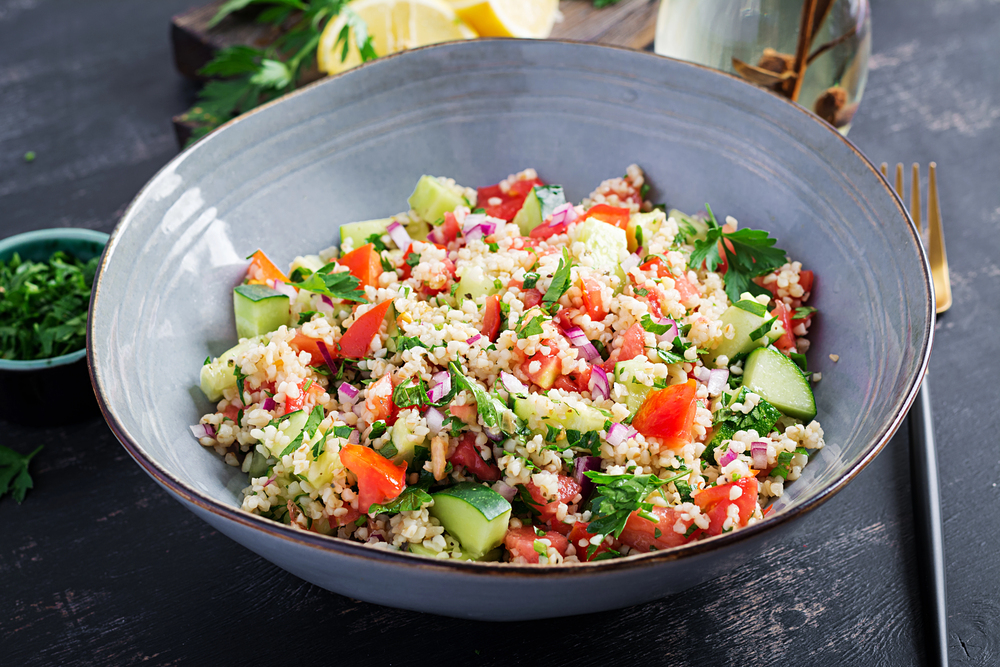
Real tabbouleh is about the parsley, not the bulgur. This bright green salad combines massive amounts of fresh parsley with tomatoes, mint, onions, and just a touch of bulgur wheat. The lemon and olive oil dressing keeps everything fresh and light. Sharing tabbouleh means everyone gets that perfect forkful where all the flavors come together — creating a clean, refreshing contrast to richer dishes on the table.
Labneh
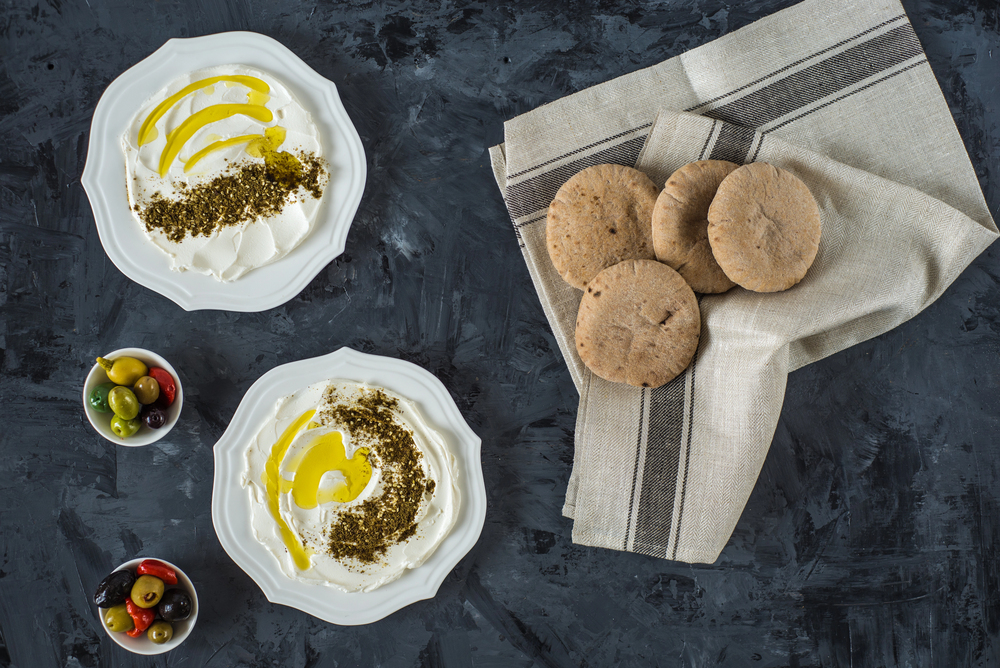
This thick, creamy cheese spread starts as yogurt yet becomes something entirely different through straining and time. Labneh has a tangy richness that pairs beautifully with olive oil, herbs, and vegetables. In Damascus, it often appears at breakfast tables where families gather to start their day. The creamy texture alongside mild flavor makes it a perfect canvas for sharing different toppings and combinations.
Fatteh
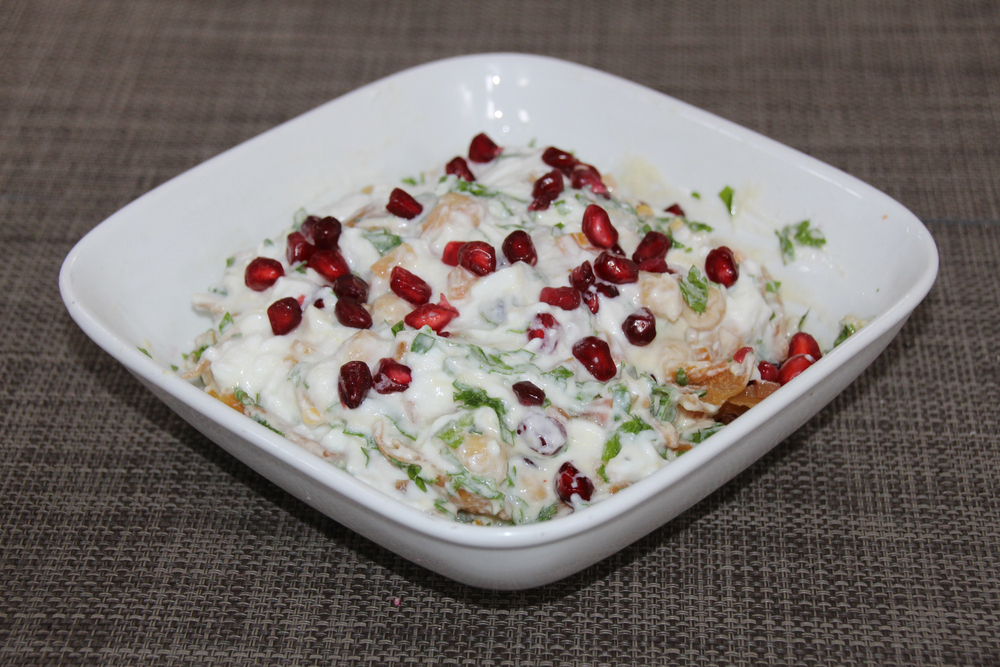
Fatteh takes simple ingredients and transforms them into comfort food magic. Toasted bread pieces get layered with chickpeas, yogurt, and tahini, then topped with nuts and spices. Each spoonful delivers different textures and temperatures — crispy bread, creamy yogurt, tender chickpeas. The dish works best when shared immediately, before the bread gets too soggy, encouraging everyone to dig in together.
Kabsa
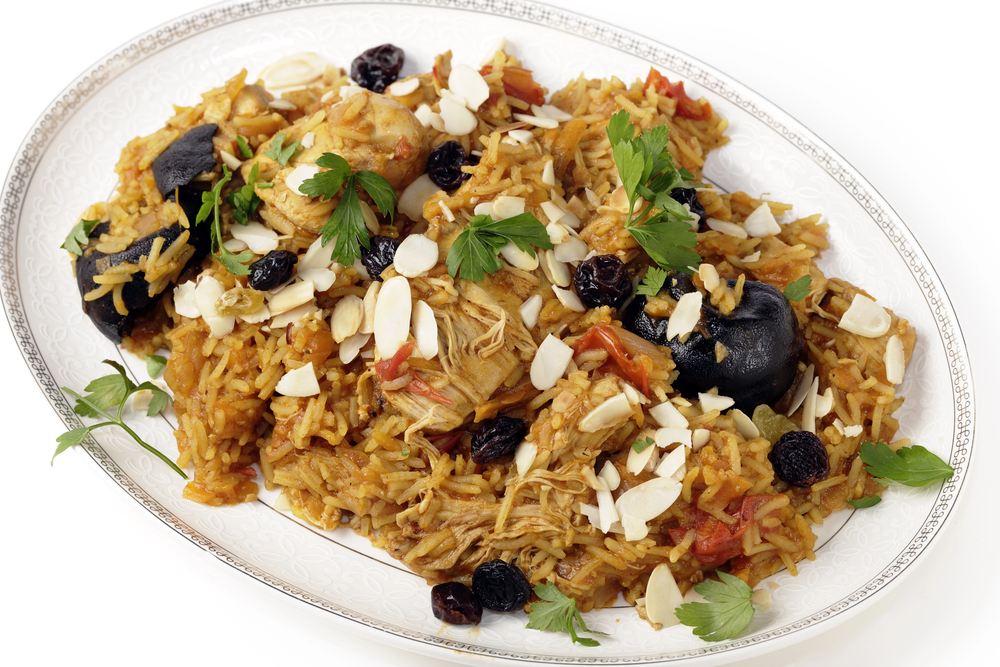
This aromatic rice dish brings warmth and spice to any gathering. Long-grain rice gets cooked with a blend of spices including cardamom, cinnamon, and bay leaves, often with tender pieces of lamb or chicken mixed in. The spices create layers of flavor that develop as you eat, making each bite slightly different from the last. Kabsa’s generous portions and rich flavors make it ideal for feeding groups while creating that satisfied, communal feeling.
Mujadara
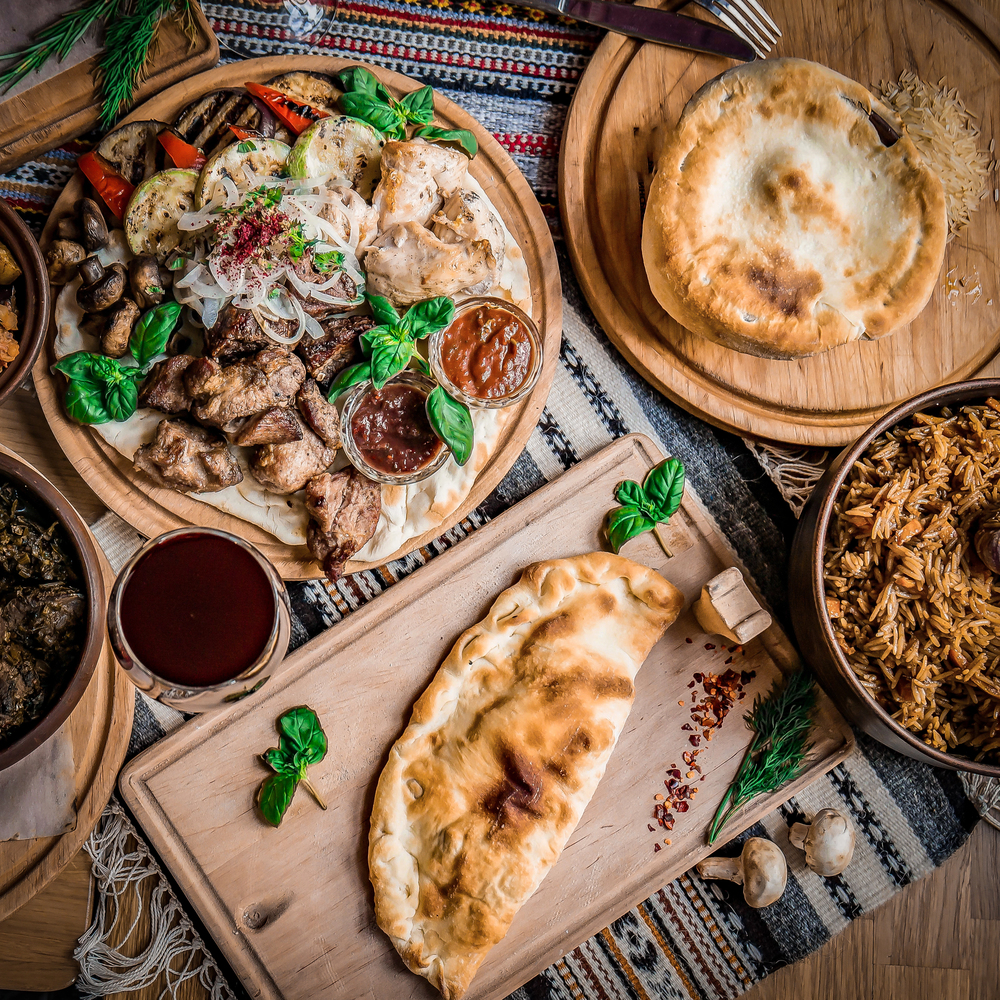
Sometimes the simplest dishes are the most satisfying. Mujadara combines lentils and rice with caramelized onions to create something that’s both humble yet luxurious. The onions get cooked until they’re sweet and golden, adding richness to the earthy lentils and rice. This dish represents the kind of home cooking that brings families together, where the love put into slow-cooking the onions translates into every comforting bite.
Knafeh
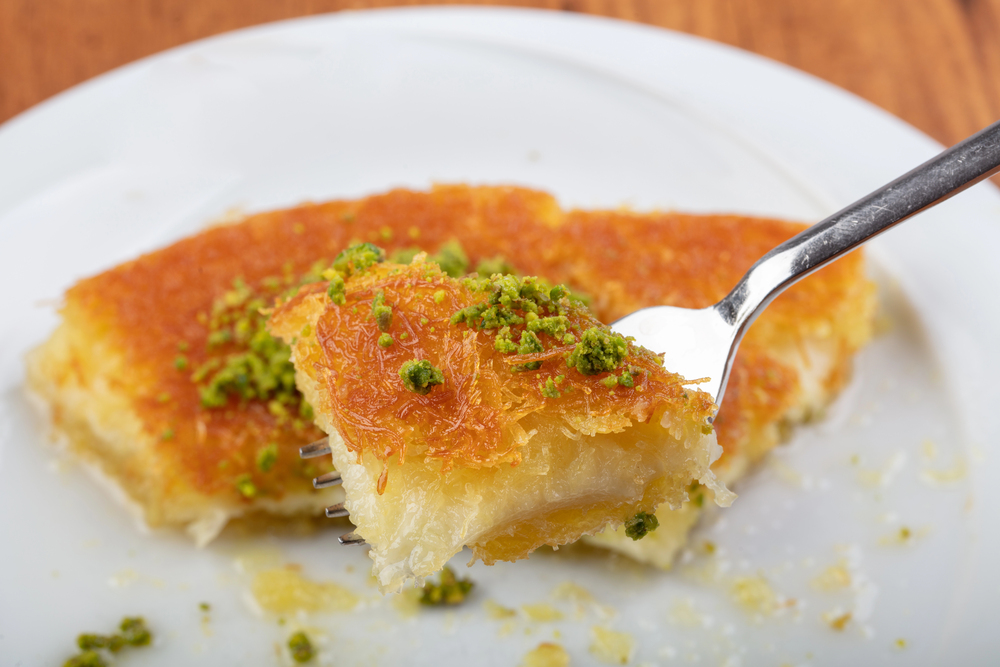
This dessert defies easy description but delivers unforgettable flavor. Shredded phyllo dough gets layered with creamy cheese, baked until golden, then soaked in rose-scented syrup. The contrast between the crispy exterior and molten cheese interior creates textural magic. Knafeh is best enjoyed warm and shared quickly, as everyone tries to get their piece before the cheese cools and the crispiness fades.
Araq
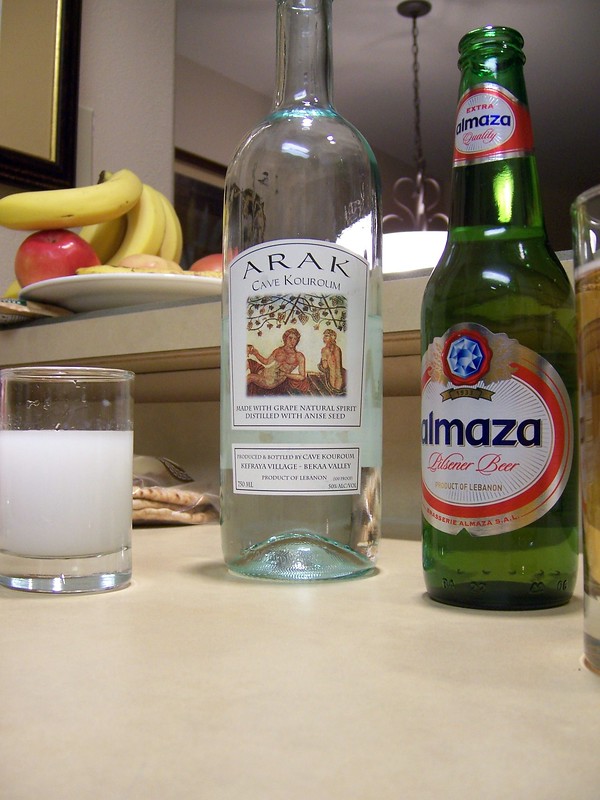
While not technically a dish, araq plays a crucial role in Syrian dining culture. This anise-flavored spirit turns cloudy white when mixed with water, earning it the nickname ‘lion’s milk.’ The ritual of preparing araq — adding ice, water, and watching it transform — becomes part of the meal experience. Sipping araq slowly while sharing mezze creates the perfect pace for long, leisurely meals where conversation flows as freely as the drink.
Malfouf
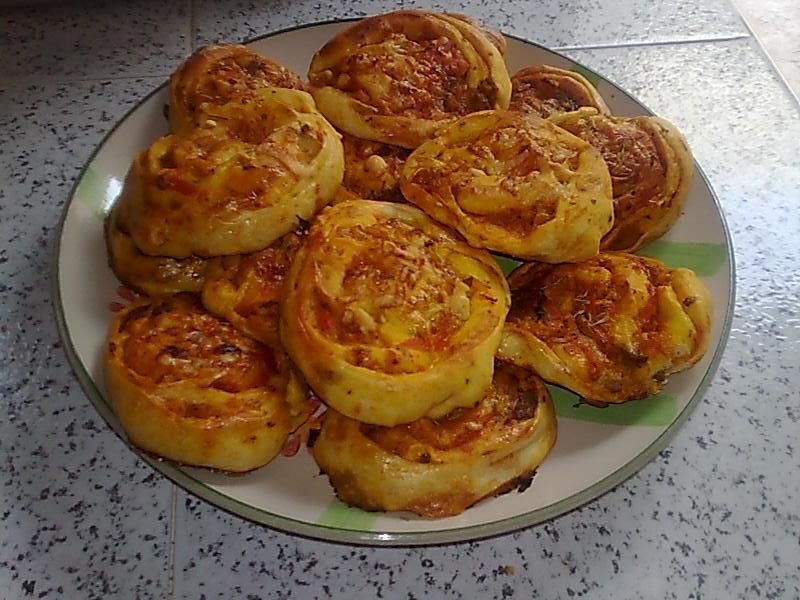
These stuffed cabbage rolls require patience to make but reward everyone who shares them. Tender cabbage leaves get wrapped around a mixture of rice, herbs, and sometimes meat, then simmered in a lemony broth. Each roll is like a small present, though the communal act of unwrapping and eating them together creates natural conversation breaks. The tangy broth ties everything together, making each bite feel like a warm hug.
Flavors That Bridge Generations
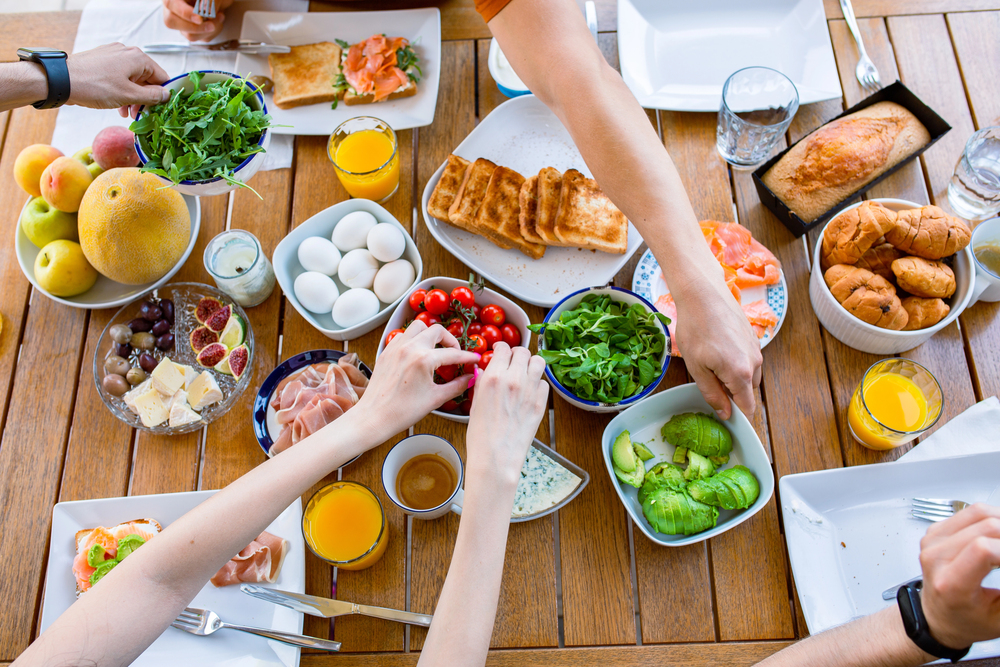
Syrian cuisine in Damascus represents more than just food — it’s a living connection between past and present. These dishes carry stories of ancient trade routes, family traditions, and the simple joy of gathering around a table. Today’s Damascus restaurants and home kitchens continue serving these same recipes, proving that some things are too good to change. When you share these dishes, you’re not just enjoying a meal — you’re participating in a cultural tradition that has brought people together for centuries, creating new memories while honoring old ones.
More from Travel Pug

- 20 Best Beach Towns in the Carolinas
- 13 Destinations Where Tourists Regularly Regret Their Trip
- 20 Things You Actually Get in First Class
- 20 Small Airports With Aviation Museums
- 20 Places in the U.S. That Are Perfect for a Reset Trip
Like Travel Pug’s content? Follow us on MSN.
